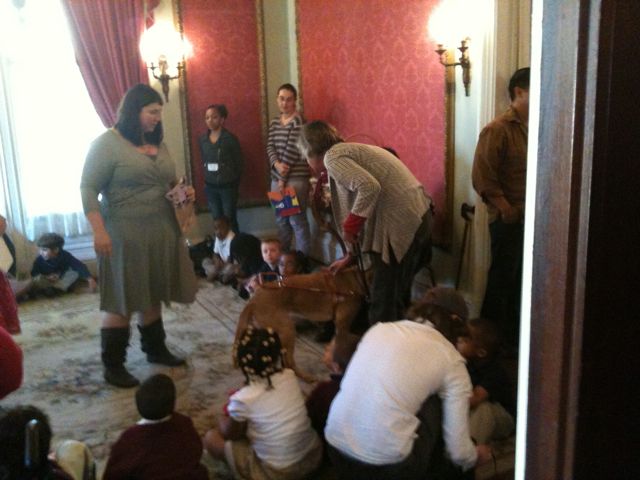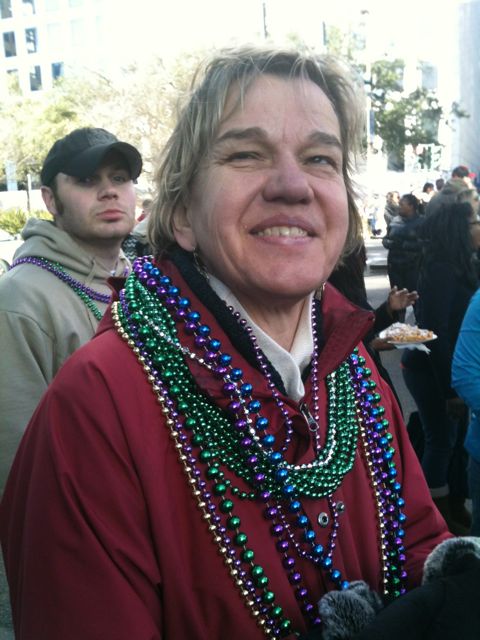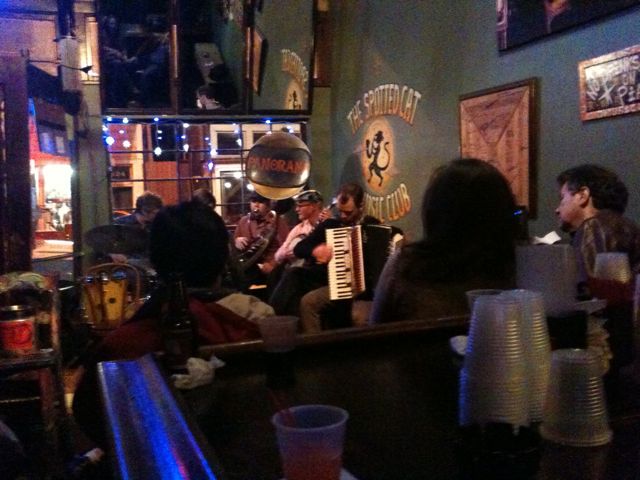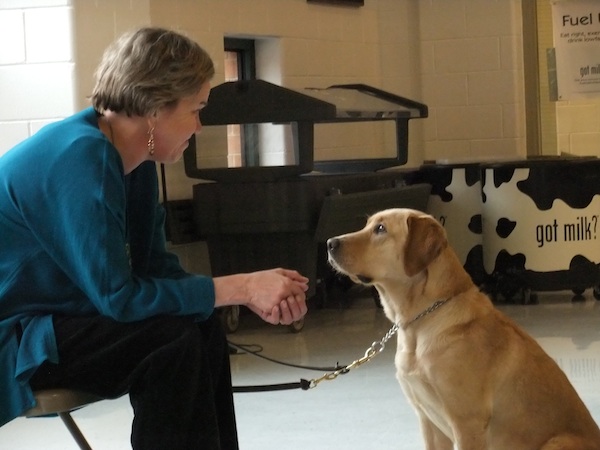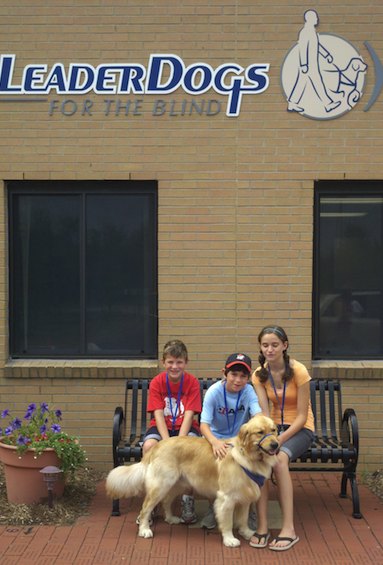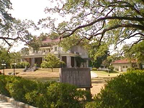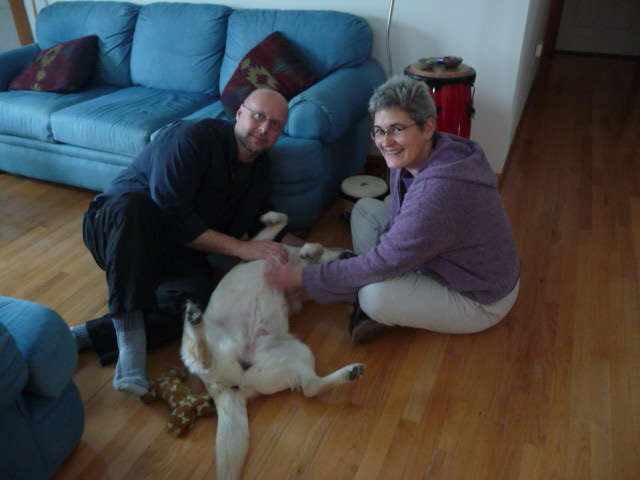Use your Mardi Gras voice
February 23, 2012 • 7 Comments • Posted in Beth Finke, blindness, Mike Knezovich, Seeing Eye dogs, travel, Uncategorized, visiting librariesIn my husband Mike Knezovich’s guest blog post about our trip to New Orleans last week, he described the “terrifyingly energetic” group of pre-schoolers who showed up to meet Whitney and me at the Latter branch of the New Orleans Public Library. What he forgot to mention was that a reporter from the New Orleans Times-Picayune showed up, too – along with a photographer!
Reporter Leigh Stewart had already interviewed me over the phone before Whitney and I arrived at the library, which was a good thing: she wouldn’t have gotten a word in at the event with all those curious kids there.
From the Times-Picayune article:
At the library, Finke spoke to the children briefly, read a section of a Braille version of “Hanni and Beth” and invited the children to ask questions.
A class of sparkly-eyed kindergarteners from Morris Jeff Community School were among the most enthusiastic participants, asking questions such as “‘How do you know when to cross the street?” and “How does your dog know a good person from a bad person?” One youngster even asked all in attendance to quiet down, as he thought Whitney was trying to sneak a quick nap.
This boy’s schoolmates took him seriously, using ssuch hushed tones that their teachers had to encourage them to use their “Mardi Graas voices” so I could hear their questions. Kindergarten teacher Ashley Millet was quoted in the Times-Picayune story saying that their class is learning about rules and regulations, so our library visit made for a perfect field trip. “They get to see that even dogs have rules,” Millet said with a laugh.
I did emphasize rules in my talk with the kids, and after I told them the rule about not calling out Whitney’s name while she’s working, I suggested we come up with a fake name to use for her while we were there. “If you use her fake name to say hi to Whitney, she wont’ notice,” I said. “She’ll think you’re talking to someone else!”
The day of our visit was February 14, so I suggested we call her “Valentine.” All the kids loved the idea. Well, except for one. She raised her hand and objected. “It’s not nice to call names,” she said. Touché.
Contributing writer Leigh Stuart did a terrific job capturing the sweet spirit of the children in her Times-Picayune article, and if you link to the entire story online you can admire the pictures staff photographer Rusty Costanza took that day. From what Mike tells me, the photos are sweet, too!
